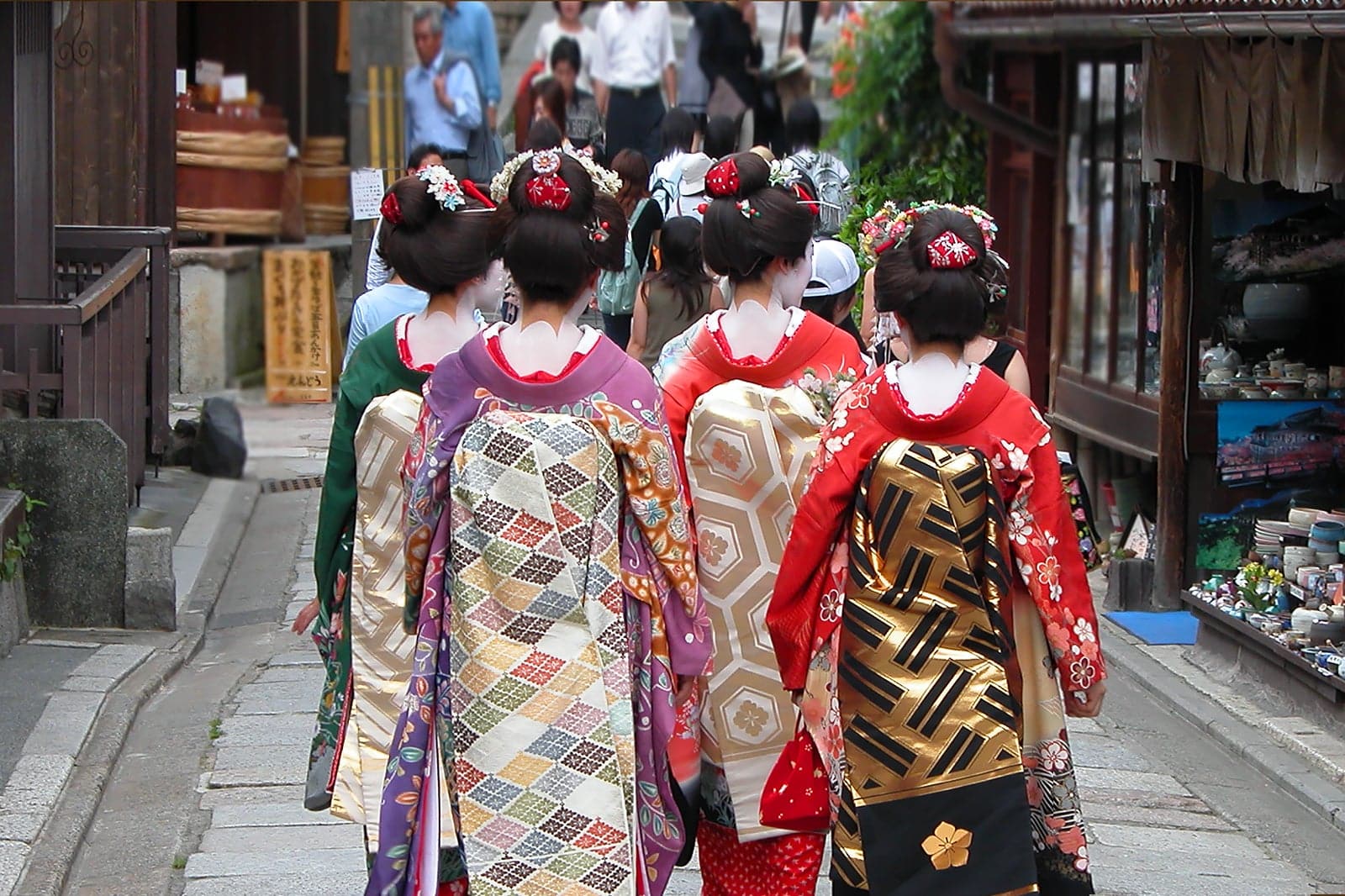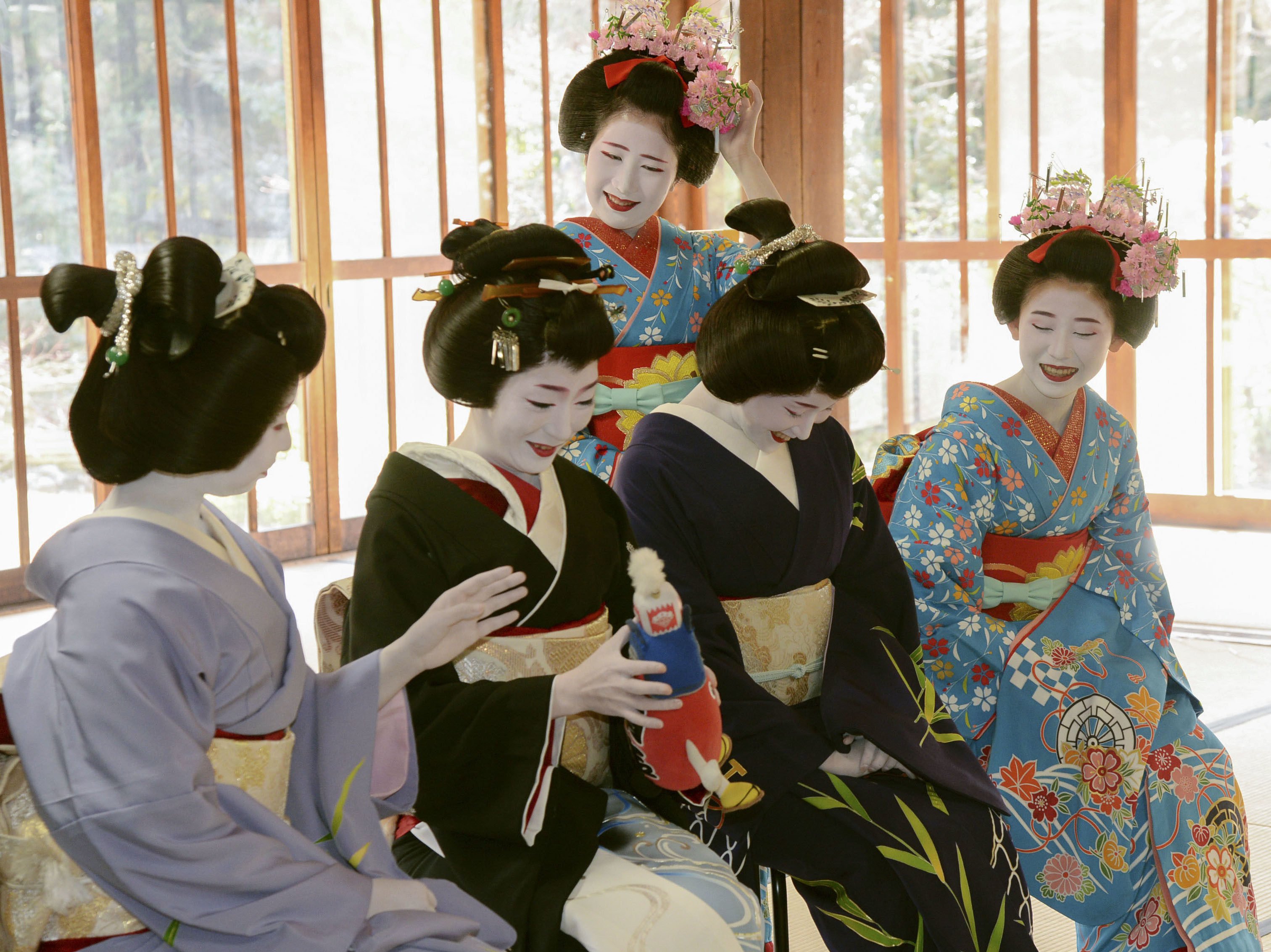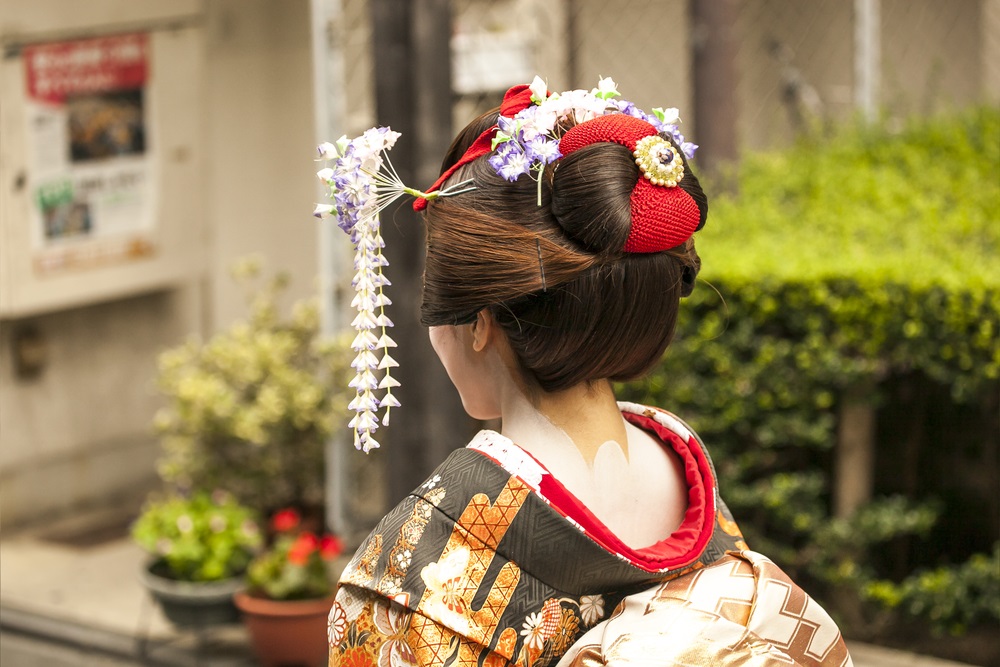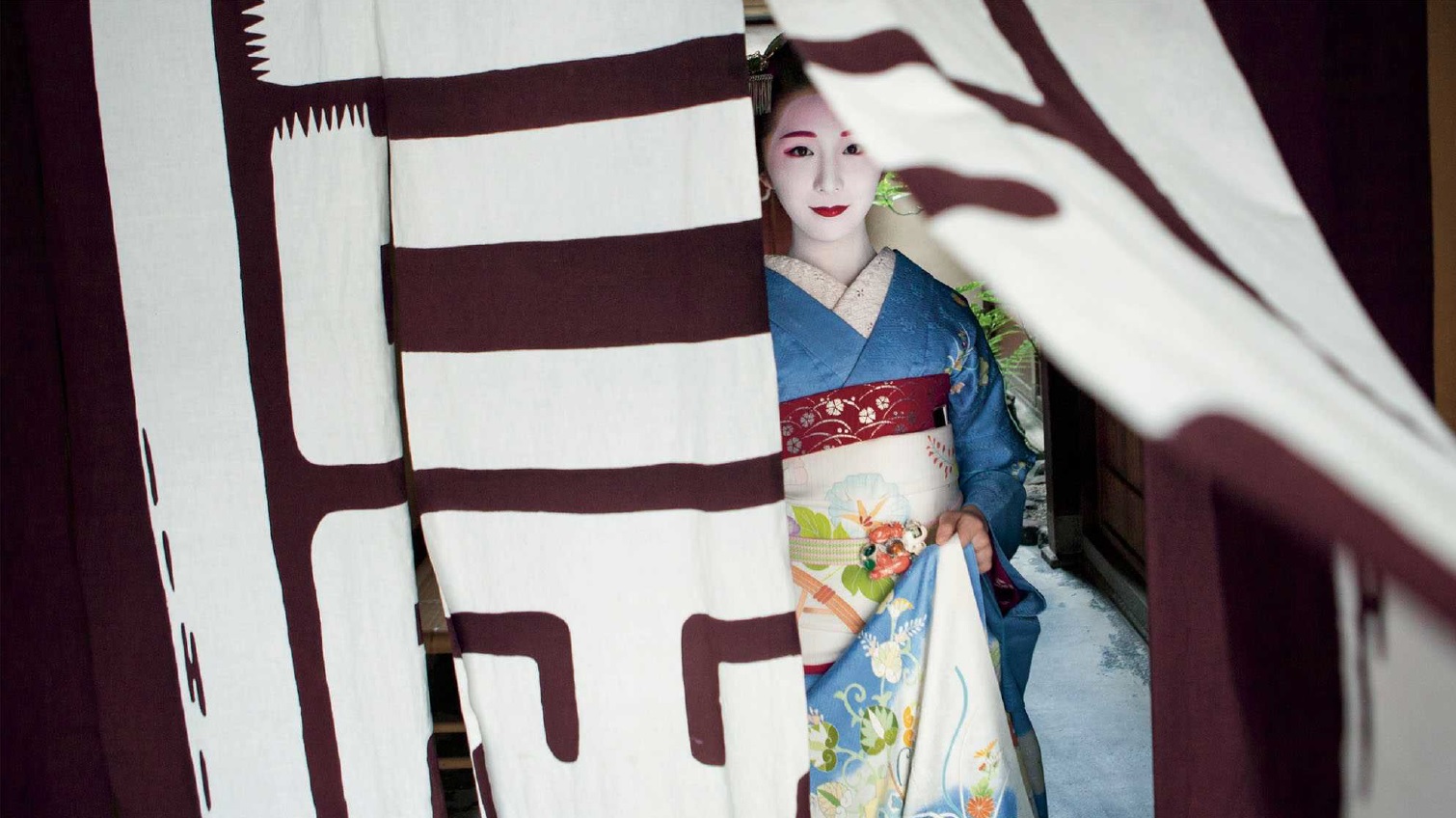News
Former Maiko Exposes the Dark Side of Geisha in Japan

Sexual assault, depression, and attempted suicide are unlikely to be associated with Japan’s world-famous Geisha, traditional entertainers in kimonos with elaborate hair and make-up who are trained in traditional Japanese performing arts.
However, viral tweets by a former Maiko – an apprentice Geisha – have revealed that criminal and sexist treatment exists within the centuries-old and secretive culture.
Kiyoha Kiritaka, 23, sparked outrage when her social media posts revealed her time as a Maiko in Kyoto’s traditional district of Pontocho.
A Maiko, usually between the ages of 15 and 20, learn to sing, dance, and play traditional instruments at parties and banquets.
However, Kiritaka’s brave revelations, based on her experiences at the age of 16, have demonstrated that “what people see as traditional culture” can have a real dark side.
Customers would “reach under my kimono and touch my breasts and crotch,” she said, but when she told the head of the Geisha house, known as Okasan, “she got angry at me and said it was my fault.”
Karnataka said in her tweets, which were shared or ‘liked’ nearly half a million times, that she was “forced to drink so much alcohol” and pressured into bathing with clients, but she managed to flee. In Japan, the legal drinking age is 20.
この世から抹消されるかもしれんけど、これが舞妓の実態。当時16 歳で浴びるほどのお酒を飲ませられ、お客さんとお風呂入りという名の混浴を強いられた(全力で逃げたけど)。これが本当に伝統文化なのか今一度かんがえていただきたい。写真はお客さんと山崎18年一気飲み大会で勝利した時と飲酒 pic.twitter.com/0kdXDZHML8
— Kiyoha@物書き (@kiyoha_xxx) June 26, 2022
She claimed she had almost no protection from her Okasan at the Okiya (tea-house), where she worked for eight months. She even stated that she could “get killed for tweeting about this” but that “if no one speaks up, nothing will change.”
Her Okasan allegedly proposed selling her virginity for 50 million yen (S$494,400), even though “I would have received nothing.”
The allegation, which was among Kiritaka’s wave of online comments in June, shocked many in Japan, reaching both Japanese and English media, especially given that sex work was made illegal by the Anti-Prostitution Act of 1956.
In 2017, the would-be pimping was the final straw for Kiritaka, who decided to leave the geisha world.
She admitted to SCMP that she was depressed and found life difficult after her time as a Maiko, but she knew of others who were worse off. She tweeted that she couldn’t “continue to watch girls in my industry attempt suicide and develop depression.” While Kiritaya did not mention rape, others working in the industry have.
Geisha still thriving
Kiritaya, who has over 69,000 Twitter followers, said she couldn’t understand why Geisha’s were still thriving in “our age of diversity,” adding that many people, including women, still admired Maikos.
“I witnessed human trafficking and male chauvinism. I wanted to ask everyone if they still admired Maikos after hearing about my experience, “She stated.
Karnataka’s words have reignited debate about Geisha’s. Academics and women’s rights activists retweeted her message, which included a female politician pleading with Japan to “listen” and “take action to create social and political change.”
However, the silence seemed to reign supreme in Kyoto. “Everyone heard about it,” said Canadian Peter Macintosh, a geisha event organizer with 30 years of experience, “but nobody talks about it.”
The culture’s selling point “is personal space. You don’t discuss your client interactions “, for better or worse. “Once you break the silence code, you’re on your own.”
Carmen Tamas, a professor at the University of Kobe who directs a Japanese language and culture program, spoke with some of Kiritaka’s colleagues, who said she was a “troublemaker” who “tarnished their reputation.”
According to Tamas, Geisha’s see themselves as preserving Japanese culture and as a “really tight community,” so Kiritaka’s outburst was unwelcome.
Netizens and the industry have accused her of seeking vengeance, attention, or money. Such accusations are common when survivors of sexual assault testify publicly in Japan, where the subject is taboo for many.
Geisha’s are a “Sacred symbol of Japan”
However, Karnataka stated that she could deal with online rage and wished to raise awareness. “I wanted people to talk about this topic, and [disagreement] is normal.”
According to government data, only 4% of rape victims report the crime, so public testimonies are uncommon. In addition to the lack of support for sexual assault survivors, the fact that they are a “sacred symbol of Japan” has polarized opinions against her, according to Karnataka.
But, because dozens of former Maikos had contacted her over the years to share their stories, even before the tweets – the Maiko world is small – knowing she was speaking out on behalf of others encouraged her to keep going.
“Geisha’s and Maikos are isolated from the general public, making it difficult or impossible to seek assistance,” Kiritaka explained.
Maikos typically begin their training at 15, leaving behind their families and friends to live in a tea-house. They have little time to rest because they practice traditional arts during the day and meet clients at night, often sleeping at 3 a.m.
Because personal mobile phones and computers are prohibited, the youth communicate with the outside world via landlines or handwritten letters. Furthermore, they only receive a portion of the money they earn because most of it goes to the tea-house.
Karnataka is not the first to speak out against industry abuse. Mineko Iwasaki, a well-known geisha, discusses rape in her autobiography, Geisha of Gion.
Tamas mentioned that the geisha culture “combines men, alcohol, money, and women. The type of work they [geisha] do is not conducive to sexual harassment protection “.
600 Geisha in Japan today
Sexual harassment, according to Tamas and Macintosh, is not common in the industry. Tamas observed that most tea-houses were strict about safety measures to protect Geisha and that there was training on deflecting unwanted advances. It was reported in 2014 that some tea houses were holding self-defense classes.
“In general, people don’t go to Geisha for sexual experiences, especially now that the hostess business is so developed,” Tamas said. “They desire a traditional experience.”
However, she stated that poorer establishments in the minority “do not necessarily share the same ethics” and may be less inclined to protect Maikos to make money.
She said the geisha community was eager to evolve and improve, even though it no longer attracts nearly as many women as it once did. There are approximately 600 Geisha in Japan today, compared to 80,000 in the 1920s.
“Okiyas will be even more protective and concerned about the well-being of the Maiko [now],” Tamas predicted. “They don’t want to taint the image of this Japanese tradition associated with purity and joy. And if [Kiritaka’s] thread is true, and it occurs regularly, it is impossible to maintain this image.”
Strict rules on Maikos
Macintosh stated that Okiyas enforced stricter rules, requiring younger Maikos to be home by 10 p.m. He also stated that the industry was attempting to attract more female customers, who currently account for approximately 20% of his tour clients.
According to Tamas, mental health and well-being are also receiving more attention, with more conversations on the subject. She also sees tea houses as a place where employees can learn new skills to help them reintegrate into society, such as English and driving lessons.
Many young women abandon their careers as Geisha when they marry or because the schedule is too demanding, while others become Okasan’s.
“There’s this myth that Geisha can only become hostesses if they leave the tea houses because they didn’t finish high school,” Tamas explained. “However, they [the tea houses] want to change this perception and show that being a geisha can benefit any career.”
Meanwhile, Karnataka continues to receive messages from former Maikos who have had similar experiences and wish to advocate for their voices to be heard.
The young mother of one now has a new job. “I want to tell many stories through writing and video and make sure that smaller voices are also heard. This includes increasing public awareness of Maikos.”
A tourism meeting in Kyoto in October revealed that Kiritaka’s testimony is still making waves, with participants agreeing that much needs to change if Maikos are to combine tradition and well-being.
“We’ll have to wait and see if other Maikos come out and say, ‘me too,'” Tamas said.
This article was first published in South China Morning Post.





















![Play Online Blackjack In Australia [2024]: Top 10 Online Australian Blackjack Sites 28 Play Online Blackjack in Australia [2024]: Top 10 Online Australian Blackjack Sites](https://www.chiangraitimes.com/wp-content/uploads/2024/03/word-image-303235-1-80x80.jpeg)












